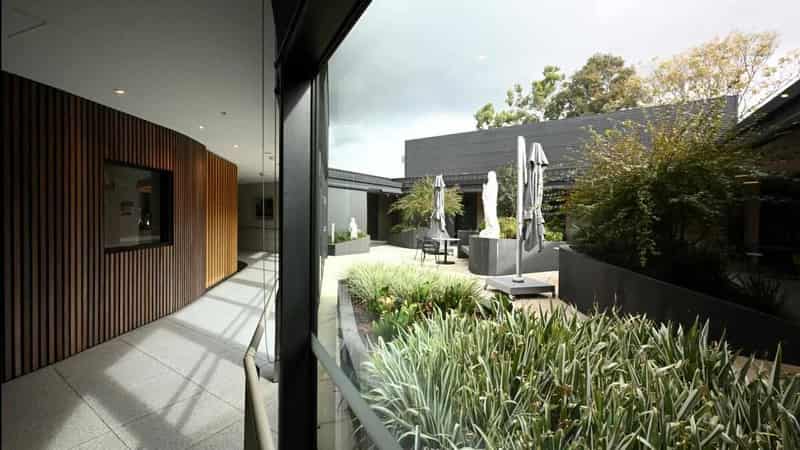
At the Caritas Christi palliative care unit, "homeliness" is sprawling crayon lines and scribbled messages of "get well soon", drawn by children in its arts room.
It's the sense of quiet, the soft carpet underfoot, and the ability for patients to simply open a window, or walk outside their rooms and touch a tree or feel the soil.
Architectural expert Rebecca McLaughlan says homeliness is more about what a space allows people to do than how it looks.
"Do you feel comfortable to sit and have a conversation on the phone, or not? Do you feel comfortable to sit with your mum and chat for two hours?
"In subtle ways, these facilities do affect the quality of time and the quantity of time that people spend with their loved ones."

The researcher is among experts advocating for greater design innovation in the palliative care sector - a concept often dismissed as incongruous with the reality of evolving health and safety regulations.
The problem runs so deep, some of Australia's best palliative care facilities - like Bear Cottage in Sydney with its carpet, lounge rooms and beautiful garden - would be difficult to build today, Dr McLaughlan says.
That's particularly true when state governments consult architects too late in the design process for health facilities and tend to prefer vinyl floors and overly wide corridors that have an institutional feel.
"You have things like healthcare guidelines that say in some states you can't have carpet at all," Dr McLaughlan said.
"There's a whole bunch of thinking that really just collides with the ethos of palliative care - some of it is for operational reasons but some of it is just odd."
Dr McLaughlan has spent years looking at palliative care design internationally.
She says there are practical and inexpensive ways to make facilities feel homely, despite some thinking it's too risky or labour-intensive to stray from clinical norms.
Carpet tiles - which can be replaced individually - can be transformative, as can separate rooms outside patients' bedrooms, mini fridges, access to nature and fresh air, and "softer" materials like wood.

St Vincent's managed to incorporate many of those elements into its recent rebuild of Caritas Christi in Melbourne's east because it relied mostly on private rather than government funding, the hospital's director of palliative medicine Mark Boughey says.
"There wasn't the compromise on the look, the feel and the amenity of what the building was going to provide," Dr Boughey told AAP.
"People aren't (in palliative care) because it's an easy place to just get off the bus - there has to be a good reason nowadays with the services that we have in the community."
Caritas Christi is in Kew, a few minutes' walk from the Yarra River, and all patients' bedrooms lead outside.
Cables and medical equipment are mostly tucked away behind wood panelling inside the rooms, which are warmly lit. A generous staff area is entirely separate to the ward.
Open House Melbourne executive director and architect Tania Davidge describes Caritas Christi as an example of best practice design in palliative care.
The organisation - which works with industry, government and the broader community to advocate for good design across Victoria - is hosting Dr McLaughlan and Dr Boughey on a panel discussion at its program Six feet under: Design + death.
Dr McLaughlan says it's essential architects are involved in palliative care facilities' design early on to dispel any misinformation about what is and isn't practical, and guide governments towards innovative options.

Dr Boughey wants to see greater flexibility in the way governments think about palliative care design.
"Most people want to die at home ... they've got familiar things around them, they know their environment, they feel connected already," he said.
"We're there to try and make them feel as grounded and as safe (as possible)."
Open House Melbourne's Six feet under program will be held on June 1 and 2 as part of Melbourne Design Week.









